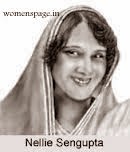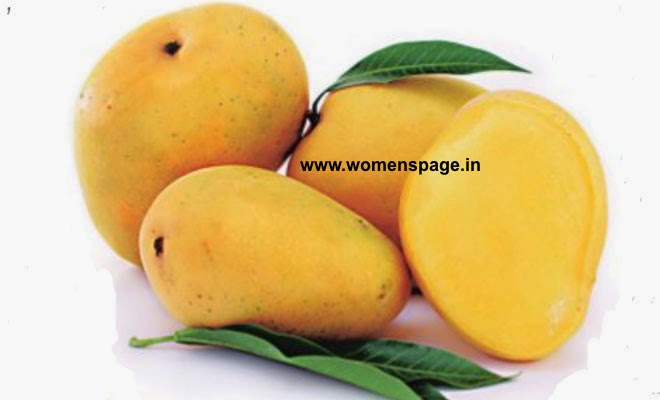Succulent plants care


Succulents are the perfect plant for forgetful gardeners. Succulent care is easy, and succulent gardens and terrariums can brighten any indoor space. Learn about the best types of succulents to grow in the home.
Succulent plants are always in style. With juicy leaves, stems, or roots, succulents form a vast and diverse group of plants, offering easy-care choices for your home. Plus, they look stunning planted alone or as companions.
The color variation of succulents seems almost endless: blue-green, chartreuse, pink, red, yellow, white, burgundy, almost black, variegated, and more. The leaves may be rounded, needlelike, berrylike, ruffled, or spiky.
While some types of succulents have somewhat exacting care requirements, most are easy to grow because they evolved with special water-storage tissues that allow them to survive in environments that are too dry for most other plants.
Succulents like the dry humidity and warm conditions found in most homes, and while they like direct light, they can adapt to lower light. They all prefer a fast-draining potting medium that's not watered too often. Allow the soil to dry out between waterings.
Succulents make great indoor plants because they’re adapted to survive dry conditions. In winter especially, homes offer dry interior air to houseplants, which is why many don’t survive. Low relative humidity isn’t a houseplant’s friend. Succulents, though, with their water-storing ways, endure dry air without ugly side effects.
Light :Although you would think that because succulents and cacti mainly originate in the desert they would be down with full high-beaming sun, I was told that for many species full midday sun can actually burn your plant. For many species brightly lit areas with lots of sunlight are perfect but not somewhere with full midday sun.
Water: This is the bit I was most surprised about. During the warmer part of the year most succulents and cacti go through a ‘growing’ phase where they are most active and need water and nutrients. When it cools down during the year they go into a dormant phase and need much less water (this is the point where you can neglect your plants a little). During the warmer months in their growing phase succulents should be watered once a week but rather than pour a cup of water now and then into the pot , wait until the dirt is completely dry and then soak the plant in water for a few minutes.
Soil:Succulents are usually found in gritty or sandy soils, and you should make sure this is what you use in the event that you replant them.
Pot: As with all plants, make sure the pot you use for your plant has a drainage hole in the bottom. This is where I think I went wrong in the past planting cacti in tea cups unfortunately doesn’t allow for the right drainage (dead succulent). If you can, plant your succulent in a terracotta pot, as apparently this improves drainage.
Re-potting :Although an annoying process to go through, if you’re a nice and caring succulent owner there will be a point at which you have to re-pot. My succulent guy says to do this every year or when the plant starts to look uncomfortable in the pot. Fingers crossed you get to that point!
Pay attention: Mr Ho said that although his tips apply generally to most succulents and cacti, they are all different and the only way to make sure you are doing the right thing is to pay attention to how they are growing apparently yellowing can mean too much sunlight (or overwatering) whilst leaning towards the light source can mean not enough.
Succulent plants for home:
Burro's Tail (Sedum morganianum):
Burro's tail is shown to its best advantage planted in a hanging basket. Overlapping, gray-green or gray-blue leaves grow up to 3 feet long. A native of Mexico, it prefers medium to high light for best performance.
Growing Tip: Allow the soil to dry slightly between waterings, and keep soil on the dry side during winter dormancy. Fertilize once in summer with a balanced 10-10-10 fertilizer. Although burro's tail rarely blooms, pink or red flowers may appear at the end of the stems in summer.
The leaves fall off with even a light touch, so keep burro's tail where it won't be disturbed. If you move a houseplant outside for summer, keep it in a shaded location. Even though burro's tail likes bright light, sudden exposure to direct sunlight may cause sunburn.
Christmas Cactus (Schlumbergera x buckleyi):
To grow, allow the top 2 inches of soil to dry out between waterings. Keep it drier in the winter. When the plant is in bud, pay close attention, because even slight dehydration or overwatering may cause buds to drop. Provide medium to high light, and fertilize three times in summer using a 10-30-10 fertilizer to promote blooms.
To initiate flower bud formation in the fall, drop the indoor temperature to 55 degrees F. Or move your plants outdoors to a shaded spot in summer and leave them out as temperatures fall. Move them indoors before the temperature reaches 45 degrees F. To prune, pinch off stem segments where necessary to keep the plant stubby.
Crown of Thorns (Euphorbia milii):
A popular import from Madagascar, crown of thorns can bloom year-round if given enough light. Long, spoon-shape leaves appear at the ends of spiky branches, along with clusters of tiny flowers. You might not notice the flowers because they're so small, but you will see the red, salmon, or yellow bracts that surround them.
When the plant is in bloom, allow only the top inch or so of soil to dry out between waterings. When the plant is not blooming, be sure the top half of the pot's soil is dry before watering. Don't let the entire pot dry out, however, or the plant will drop its leaves. If your plant dries out and loses its leaves, it will grow new ones in a few weeks after you begin watering.
Direct sun produces the best bloom, but crown of thorns adapts to medium light. Fertilize three times in summer using a bloom-booster fertilizer of 10-30-10.
All euphorbia contain a skin-irritating sap. Wash your hands thoroughly after handling.
Hens-and-Chicks (Sempervivum tectorum or Echeveria elegans):
Two succulent plants share the common name of hens-and-chicks. They're closely related but look different. Both produce "chicks"small, identical plants that are slightly offset from the mother (the hen).
Echeveria elegans forms flat, flowerlike rosettes with rounded edges. Sempervivum tectorum also forms in rosettes, but each leaf tends to be flatter and more pointed. The flowering patterns are different. Echeveria grows arching, smooth, bell-shape blooms every year. Individual Sempervivum grows pink star-shape flowers on plants that die after flowering. Usually by this time the plant has produced so many offsets that the loss is not great. After all, the Latin translation of sempervivum means "ever living."
When grown as houseplants, the two perform the same way. Both should be allowed to dry slightly between waterings, as overwatering causes rotting. Water very little during winter dormancy.
Fertilize three times in summer with 10-10-10 balanced fertilizer. Propagate by removing offsets and potting them. Although they look tough, they can easily be scarred if water touches the foliage or if bumped.
Jade Plant (Crassula ovata):
The jade plant is an old-fashioned favorite for a reason: It's so easy to grow! This long-lived South African native grows thick stems and thick, glossy green leaves tinged with red.
Allow the soil to dry completely between waterings. Although some gardeners water jade only when the leaves begin to pucker or lose their shine, these are signs the plant is already stressed, so it may begin to drop leaves. Jades are most commonly killed by overwatering. A plant may adopt a weeping form if chronically overwatered.
Fertilize three times in summer only with 10-10-10 fertilizer. Keep jade plants potted in terra-cotta for good air movement through the soil and to help balance a top-heavy plant. Repotting is seldom necessary because of the small root system, but if you do repot, use a mix for cactus or well-draining potting soil.
Prune jade as necessary to keep it symmetrical, so one side doesn't cause the entire pot to topple. Simply cut off a branch or leaf, and plant it to create new plants. Rooting new plants around the base of a plant creates the look of a shrubby thicket. For an architectural look, some gardeners pinch all the leaves along the thick stems, leaving only the leaves at the top.
Medicine Plant (Aloe vera):
The healing sap of this familiar medicinal plant has been used for centuries to treat wounds and sunburn. However, the sharp "teeth" along the leaf margins can cut an unsuspecting passerby, so place it where it can't be brushed accidentally.
Allow the soil to dry out between soakings. Don't let the plant stand in water. Keep it in direct sunlight or the greatest amount of light possible. Fertilize three times in summer with a balanced 10-10-10 fertilizer; avoid fertilizing in winter. You don't need to repot unless the roots are obviously pushing their way out of a pot. If so, use a potting mix designed for cactus.
Panda Plant (Kalanchoe tomentosa):
There are dozens of kinds of
Kalanchoe plants, but the panda plant is among the most common. A native of Madagascar, panda plant is grown strictly for its foliage.Thick green leaves are covered with soft silver hairs, giving the plant a fuzzy, blue-gray appearance. The edges of the leaves are tipped with brown or rust-color hairs.
Allow the top 2 inches of soil to dry out between waterings. During dormancy in winter, water only enough to keep the soil from drying out completely. Grow in medium to bright filtered light. Fertilize three times in summer with a 10-10-10 fertilizer.
Although it can be pruned, panda plant seldom needs grooming except to remove any wayward stems.
Pincushion Cactus (Mammillaria):
Pincushions form a group of about 200 species of ball-shape cacti that are among the most common cacti grown in the home. Most hail from Mexico, where they grow in full sun. Pincushion cacti can remain small and may take the form of single balls or clumps, often flowering indoors.
Be careful: The spines look delicate but have hooked ends that are difficult to pull out of skin.
To grow a pincushion cactus, provide the highest light possible. Allow the soil to dry out almost completely between waterings, and withhold water entirely in the winter to give it a cool, dormant period needed for flowering. Fertilize three times in summer only, using a balanced 10-10-10 fertilizer.
Ponytail Palm (Beaucarnea recurvata):
Ponytail palms are not palm trees at all, but their feathery mops of green leaves atop a leathery-looking trunk resemble them. The ponytail palm doesn't look like a succulent, even though it is related to the agave plant. Its water-storage unit is the swollen, bulbous base of the trunk that gives the plant its other common name: elephant foot.
Long, sometimes curly, straplike leaves have very little surface to lose moisture, a boon in its native areas in the southwestern United States and Mexico.
This succulent is the perfect houseplant for a neglectful gardener because it doesn't need a lot of watering. Allow the soil to dry almost completely before watering, and keep low humidity if possible. Grow it in high light and direct sun if possible, but the plant will adapt to medium light. Remembering ponytail palm's native habitat, keep it hot or medium temperature. If it must be kept cool, water less often.
Ponytail palms grow slowly, reaching 12-20 feet indoors. Repot when the plant gets too top-heavy for its container. Fertilize only about once a year, using a balanced fertilizer such as 10-10-10.
Snake plant (Sansevieria trifasciata):
This succulent can take a beating. Stories abound about forgotten, dead-looking snake plants coming back to life upon watering. Long, pointed leaves grow with patterned markings reminiscent of a snake. You can leave this plant in a pot for many years, allowing the rhizomes to multiply into a thick clump.
Allow the soil to dry out slightly between waterings. Overwatering causes leaf and crown rot. It tolerates low light but performs best with medium or high light. It doesn't need fertilizer, but if you insist you can apply 10-10-10 once a year.
Snake plant tolerates neglect but thrives on attention. Prune out any damaged leaves so the overall plant looks better.
Thanks for Visiting
womenspage.in













-.jpg)
-.jpg)
-.jpg)
-.jpg)
-.jpg)
-.jpg)
-.jpg)
-.jpg)
-.jpg)
-.jpg)













 Follow Us on Twitter!
Follow Us on Twitter!










